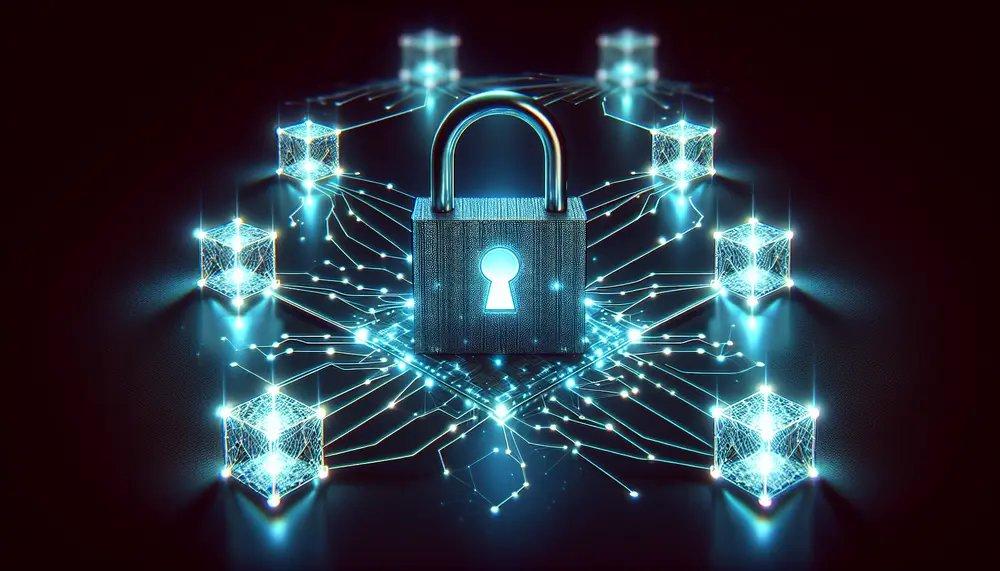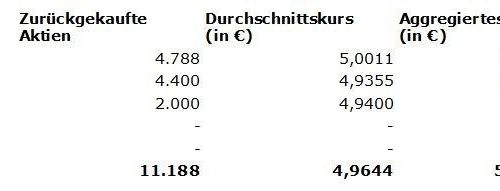
Security in Blockchain Technology: Invulnerable or Still Vulnerable?
What is Blockchain Security?
Blockchain security refers to the measures and protocols that protect the integrity and confidentiality of data within a blockchain network. At its core, blockchain is a decentralized ledger that records transactions across multiple computers. This decentralized nature is one of its primary security features, as it makes it difficult for any single entity to alter the data without consensus from the network.
There are several key components that contribute to blockchain security:
- Cryptographic Hashing: Each block in the blockchain contains a cryptographic hash of the previous block, ensuring that any change in one block would require changes to all subsequent blocks.
- Consensus Mechanisms: Protocols like Proof of Work (PoW) and Proof of Stake (PoS) ensure that all participants in the network agree on the validity of transactions.
- Decentralization: The distributed nature of blockchain means that there is no single point of failure, making it more resilient to attacks.
These components work together to create a secure environment for digital transactions and data storage. However, as with any technology, it is essential to understand both its strengths and potential weaknesses.
The Strengths of Blockchain Security
Blockchain technology offers several strengths that make it a robust option for securing digital transactions and data. These strengths are primarily derived from its unique structure and operational principles. Here are some of the key strengths of blockchain security:
- Immutability: Once data is recorded on a blockchain, it cannot be easily altered or deleted. This immutability ensures that transaction records are permanent and tamper-proof.
- Transparency: Blockchain transactions are transparent and can be verified by all participants in the network. This transparency builds trust among users and reduces the risk of fraud.
- Decentralization: The decentralized nature of blockchain eliminates the need for a central authority, reducing the risk of single points of failure and making the system more resilient to attacks.
- Cryptographic Security: Blockchain uses advanced cryptographic techniques to secure data. Each transaction is encrypted and linked to the previous one, creating a secure chain of information.
- Consensus Mechanisms: Protocols like Proof of Work (PoW) and Proof of Stake (PoS) ensure that all participants agree on the validity of transactions, making it difficult for malicious actors to manipulate the system.
These strengths make blockchain a powerful tool for securing digital transactions and data. However, it is important to remember that no system is entirely invulnerable. Understanding the potential vulnerabilities of blockchain technology is crucial for maintaining its security.
Potential Vulnerabilities in Blockchain
While blockchain technology offers robust security features, it is not without its potential vulnerabilities. Understanding these weaknesses is essential for anyone involved in blockchain development or usage. Here are some of the key vulnerabilities in blockchain technology:
- 51% Attack: If a single entity gains control of more than 50% of the network’s mining power, they can manipulate the blockchain. This includes reversing transactions and double-spending coins.
- Smart Contract Exploits: Smart contracts are self-executing contracts with the terms directly written into code. Bugs or vulnerabilities in the code can be exploited, leading to significant financial losses.
- Phishing and Social Engineering: Even with strong cryptographic security, users can still fall victim to phishing attacks. Hackers use social engineering techniques to trick users into revealing private keys or other sensitive information.
- Sybil Attacks: In a Sybil attack, a malicious actor creates multiple fake identities to gain influence over the network. This can disrupt the consensus mechanism and compromise the integrity of the blockchain.
- Insufficient Decentralization: Some blockchain networks may not be as decentralized as they appear. If a small number of nodes control the majority of the network, it becomes vulnerable to collusion and manipulation.
Recognizing these vulnerabilities is the first step in mitigating them. By implementing best practices and staying vigilant, the blockchain community can continue to enhance the security of this transformative technology.
51% Attack: A Real Threat?
A 51% attack is one of the most well-known vulnerabilities in blockchain technology. This type of attack occurs when a single entity or group gains control of more than 50% of the network’s mining power. With this majority control, the attacker can manipulate the blockchain in several ways:
- Double-Spending: The attacker can reverse transactions they made while in control, allowing them to spend the same cryptocurrency more than once.
- Blocking Transactions: They can prevent new transactions from gaining confirmations, effectively halting the network’s activity.
- Reorganizing the Blockchain: The attacker can rewrite parts of the blockchain, invalidating transactions and disrupting the network’s integrity.
While a 51% attack is theoretically possible, it is extremely difficult and costly to execute on large, well-established blockchains like Bitcoin. The sheer amount of computational power required makes it impractical for most attackers. However, smaller and less decentralized blockchains are more vulnerable to such attacks.
Several measures can help mitigate the risk of a 51% attack:
- Increasing Network Decentralization: Ensuring that no single entity controls a significant portion of the network’s mining power.
- Implementing Checkpoints: Adding periodic checkpoints to the blockchain to prevent reorganization of the entire chain.
- Adopting Hybrid Consensus Mechanisms: Combining Proof of Work (PoW) with other consensus mechanisms like Proof of Stake (PoS) to enhance security.
While the threat of a 51% attack is real, understanding its mechanics and implementing preventive measures can significantly reduce its likelihood and impact.
Smart Contract Exploits
Smart contracts are a revolutionary feature of blockchain technology, enabling automated and self-executing agreements. However, they are not immune to vulnerabilities. Smart contract exploits occur when attackers find and exploit bugs or weaknesses in the contract’s code. These exploits can lead to significant financial losses and undermine trust in the system.
Here are some common types of smart contract exploits:
- Reentrancy Attacks: This occurs when a function makes an external call to another contract before resolving its state. Attackers can exploit this by repeatedly calling the function, draining funds from the contract.
- Integer Overflow and Underflow: These exploits happen when arithmetic operations exceed the maximum or minimum value a variable can hold. Attackers can manipulate these operations to alter the contract’s behavior.
- Unchecked External Calls: If a smart contract calls an external contract without verifying its success, attackers can exploit this to manipulate the contract’s logic.
- Timestamp Dependence: Some smart contracts rely on block timestamps for critical operations. Attackers can manipulate these timestamps to their advantage.
To mitigate the risk of smart contract exploits, developers should follow best practices:
- Code Audits: Regularly audit smart contract code to identify and fix vulnerabilities before deployment.
- Formal Verification: Use formal methods to mathematically prove the correctness of smart contract code.
- Use Established Libraries: Leverage well-tested libraries and frameworks to reduce the risk of introducing new vulnerabilities.
- Implement Fallback Mechanisms: Design contracts with fallback mechanisms to handle unexpected behavior gracefully.
By understanding and addressing these potential exploits, developers can create more secure and reliable smart contracts, enhancing the overall security of blockchain applications.
Phishing and Social Engineering Risks
Phishing and social engineering are significant risks in the blockchain ecosystem. These attacks exploit human psychology rather than technical vulnerabilities, making them particularly challenging to defend against. Here’s how these risks manifest in the blockchain world:
- Phishing Attacks: Attackers create fake websites or emails that mimic legitimate services. They trick users into revealing their private keys, passwords, or other sensitive information. Once obtained, the attacker can access the user’s cryptocurrency wallet and steal funds.
- Social Engineering: This involves manipulating individuals into performing actions or divulging confidential information. For example, an attacker might pose as a trusted entity and convince a user to transfer cryptocurrency to a fraudulent address.
These attacks can have devastating consequences, but there are ways to mitigate the risks:
- Education and Awareness: Users should be educated about the common tactics used in phishing and social engineering attacks. Awareness is the first line of defense.
- Two-Factor Authentication (2FA): Implementing 2FA adds an extra layer of security. Even if an attacker obtains a password, they would still need the second factor to gain access.
- Secure Communication Channels: Always verify the authenticity of communication channels. For example, double-check URLs and email addresses before entering sensitive information.
- Regular Audits: Conduct regular security audits to identify and address potential vulnerabilities in systems and processes.
By understanding the nature of phishing and social engineering risks and taking proactive measures, users and organizations can better protect themselves against these types of attacks.
The Importance of Regular Audits
Regular audits are crucial for maintaining the security and integrity of blockchain systems. Audits involve a thorough examination of the blockchain’s code, processes, and overall architecture to identify and rectify vulnerabilities. Here’s why regular audits are essential:
- Identifying Vulnerabilities: Audits help uncover potential weaknesses in the blockchain’s code and infrastructure. By identifying these vulnerabilities early, developers can address them before they are exploited by malicious actors.
- Ensuring Compliance: Regular audits ensure that the blockchain system complies with relevant regulations and standards. This is particularly important for projects that handle sensitive data or financial transactions.
- Building Trust: Conducting regular audits demonstrates a commitment to security and transparency. This builds trust among users, investors, and other stakeholders, enhancing the credibility of the blockchain project.
- Improving Performance: Audits can also identify inefficiencies in the blockchain’s operation. By addressing these issues, developers can improve the system’s performance and scalability.
There are several types of audits that can be conducted on a blockchain system:
- Code Audits: A detailed review of the blockchain’s codebase to identify bugs, vulnerabilities, and areas for improvement.
- Security Audits: An assessment of the blockchain’s security measures, including cryptographic protocols, consensus mechanisms, and access controls.
- Compliance Audits: Ensuring that the blockchain system adheres to legal and regulatory requirements.
- Performance Audits: Evaluating the efficiency and scalability of the blockchain system.
To maximize the effectiveness of audits, it is important to engage independent and reputable auditors. These experts bring an unbiased perspective and have the expertise to identify issues that internal teams might overlook.
In conclusion, regular audits are a vital component of blockchain security. They help identify and mitigate risks, ensure compliance, build trust, and improve overall performance. By prioritizing regular audits, blockchain projects can enhance their security posture and achieve long-term success.
Security Best Practices in Blockchain Development
Implementing security best practices in blockchain development is essential to safeguard the integrity and reliability of the system. By following these practices, developers can minimize vulnerabilities and enhance the overall security of their blockchain projects. Here are some key best practices to consider:
- Secure Coding Standards: Adhere to secure coding standards and guidelines to prevent common vulnerabilities such as buffer overflows, injection attacks, and improper error handling.
- Regular Code Reviews: Conduct regular code reviews to identify and fix potential security issues. Peer reviews can provide fresh perspectives and catch errors that might be overlooked by the original developer.
- Use Established Cryptographic Algorithms: Utilize well-tested and widely accepted cryptographic algorithms. Avoid creating custom cryptographic solutions, as they are more likely to contain vulnerabilities.
- Implement Multi-Factor Authentication (MFA): Enhance security by requiring multiple forms of authentication for accessing sensitive parts of the blockchain system.
- Minimize Attack Surface: Reduce the attack surface by limiting the number of exposed services and endpoints. Only expose what is necessary for the system to function.
- Regular Security Audits: As mentioned earlier, conduct regular security audits to identify and address vulnerabilities. Engage independent auditors for an unbiased assessment.
- Continuous Monitoring: Implement continuous monitoring to detect and respond to security incidents in real-time. Use automated tools to monitor for unusual activity and potential threats.
- Education and Training: Ensure that all team members are educated about security best practices and the latest threats. Regular training sessions can help keep the team informed and vigilant.
- Backup and Recovery Plans: Develop and regularly test backup and recovery plans. In the event of a security breach or system failure, having a robust recovery plan can minimize downtime and data loss.
By integrating these best practices into the development process, blockchain developers can create more secure and resilient systems. Security should be a continuous effort, with regular updates and improvements to address emerging threats and vulnerabilities.
Future of Blockchain Security
The future of blockchain security is both promising and challenging. As blockchain technology continues to evolve, so do the methods and strategies for securing it. Here are some key trends and developments that are shaping the future of blockchain security:
- Advanced Cryptographic Techniques: Emerging cryptographic methods, such as quantum-resistant algorithms, are being developed to protect blockchain systems against future threats posed by quantum computing. These advanced techniques aim to enhance the security and longevity of blockchain networks.
- Zero-Knowledge Proofs (ZKPs): ZKPs allow one party to prove to another that a statement is true without revealing any additional information. This technology can enhance privacy and security in blockchain transactions by minimizing the amount of data exposed.
- Decentralized Identity Solutions: Decentralized identity systems are being developed to give users more control over their personal information. These solutions can reduce the risk of identity theft and improve the security of blockchain-based applications.
- Automated Security Audits: The use of artificial intelligence (AI) and machine learning (ML) in security audits is becoming more prevalent. These technologies can automate the detection of vulnerabilities and provide real-time insights, making the auditing process more efficient and effective.
- Interoperability and Cross-Chain Security: As multiple blockchain networks emerge, ensuring their interoperability and security becomes crucial. Cross-chain security protocols are being developed to facilitate secure interactions between different blockchain ecosystems.
- Regulatory Compliance: Governments and regulatory bodies are increasingly focusing on blockchain technology. Future security measures will need to comply with evolving regulations, ensuring that blockchain systems are both secure and legally compliant.
- Community-Driven Security Initiatives: The blockchain community plays a vital role in enhancing security. Open-source projects and collaborative efforts can lead to the development of more robust security solutions and the rapid identification of vulnerabilities.
In conclusion, the future of blockchain security will be shaped by technological advancements, regulatory developments, and community efforts. By staying ahead of emerging threats and continuously improving security measures, the blockchain ecosystem can achieve greater resilience and trustworthiness.
Conclusion
In conclusion, blockchain technology offers robust security features, but it is not without its vulnerabilities. Understanding both the strengths and weaknesses of blockchain security is crucial for anyone involved in this field. From the decentralized nature of the technology to the potential risks like 51% attacks and smart contract exploits, there are many factors to consider.
Implementing best practices, such as regular audits, secure coding standards, and continuous monitoring, can significantly enhance the security of blockchain systems. Additionally, staying informed about emerging threats and advancements in cryptographic techniques will help in maintaining a secure environment.
The future of blockchain security looks promising, with innovations like quantum-resistant algorithms and zero-knowledge proofs on the horizon. However, it will require ongoing efforts from developers, users, and regulatory bodies to ensure that blockchain technology remains secure and trustworthy.
By prioritizing security and staying vigilant, the blockchain community can continue to build and maintain systems that are both resilient and reliable, paving the way for broader adoption and trust in this transformative technology.
Die Provimedia GmbH ist ein Online-Verlag mit Sitz in der Region Stuttgart. Wir schaffen wertvolle Informationen in unterschiedlichen Branchen um Wissen schnell und einfach zugänglich zu machen. Wir haben uns auf übersichtliche Webseiten und Auffindbarkeit von Informationen spezialisiert.
Provimedia GmbH
Weidenweg 12
74321 Bietigheim-Bissingen
Telefon: +49 (7142) 3442727
Telefax: +49 (7142) 2279985
http://provimedia.de
CEO
Telefon: +49 (7142) 3442727
E-Mail: info@provimedia.de
![]()




